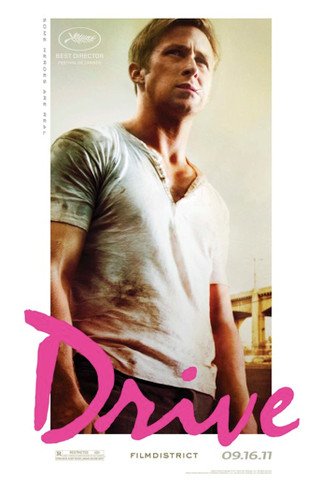
By Zack Gill
Arts Editor
The first minutes of director Nicholas Winding Refn’s new film, “Drive,” consist of a low-speed car chase through downtown Los Angeles, a scene that will go down as one of the greatest in recent cinematic history for its tension and brooding elegance.
Refn, director of “Bronson” and “Valhalla Rising,” has created his masterpiece with “Drive.” Refn is inspired by a variety of sources. Tinges of the style of director William Friedkin influence how Refn utilizes tension. The vehicular antics of car-chase films like “Bullitt,” as well as the geography of Los Angeles itself, also shape Refn’s strikingly original vision. “Drive” combines the best of genre fare and highbrow artistic cinema with its gorgeous cinematography, skilled performances and pulsating synthesizer-tinged score.
Ryan Gosling portrays an unnamed stuntman-turned-getaway car driver. His friend Shannon (Bryan Cranston) gets him involved with two gangsters, Nino (Ron Perlman) and Bernie (Albert Brooks), who Shannon seeks to fund Gosling’s possible career in stock car racing.
Meanwhile, Gosling’s character becomes romantically entwined with his neighbor, Irene (Carey Mulligan). In an attempt to protect Irene and her family from gangsters, Gosling gets involved with a botched robbery that dangerously entangles him with his gangster associates.
Refn has put together one of the best ensemble casts in recent memory. Gosling continues to display his versatility by playing a character radically different from his role in last year’s largely overlooked “Blue Valentine.”
Gosling’s character has very few lines throughout the film, which proves to work to his benefit – he relies solely and effectively on expression and presence. Mulligan gives an understated, emotional performance that evokes her work in last year’s underrated “Never Let Me Go.”
Perlman and, in particular, Brooks prove to be inspired casting decisions. While Perlman’s character, in contrast with his physique, is almost broadly comic at times, Brooks manages to give a truly terrifying performance. It is as if the actors traded roles with each other during production, but both of their performances work extremely well.
“Drive” is visually stunning. Filmed in a wide aspect ratio, the film is filled with sweeping camera work and accentuated with bold colors (perhaps due to Refn’s color-blindness). The film portrays Los Angeles as stark and sparse, evoking Friedkin’s work in “To Live and Die in Los Angeles.” Still, “Drive” never becomes indulgent in its artistry, like this year’s “Tree of Life” does. Cinematographer Newton Thomas Sigel, notable for his collaborations with director Bryan Singer, has done Oscar-caliber work in the film “Drive.”
With a score from former Red Hot Chili Pepper drummer Cliff Martinez (who also scored this month’s “Contagion”), “Drive” uses sparse, synthesizer-based tunes to accentuate mood and tone. Martinez seems to be drawing from some of the band’s Tangerine Dream film scores of the 1980s, such as the famous“Risky Business” score.
The squeamish should be well aware of the staggering violence in the movie. A nearly action-less first half of the film builds “Drive” to its inevitable, bloody catharsis. In fact, the juxtaposition between the tone and texture-based first half of “Drive” and the action-packed second half helps to make the violence more shocking. Unfortunately, this film is not for everyone.
“Drive” has already earned Nicholas Winding Refn the Canne Film Festival’s prestigious “Best Director” award. Perhaps now he will achieve commercial success in the United States as well. “Drive” is an achievement not just in genre fare and not just in cinema, but in art as a whole. “Drive” is rated R and is playing in theatres nationwide.



Leave a Reply